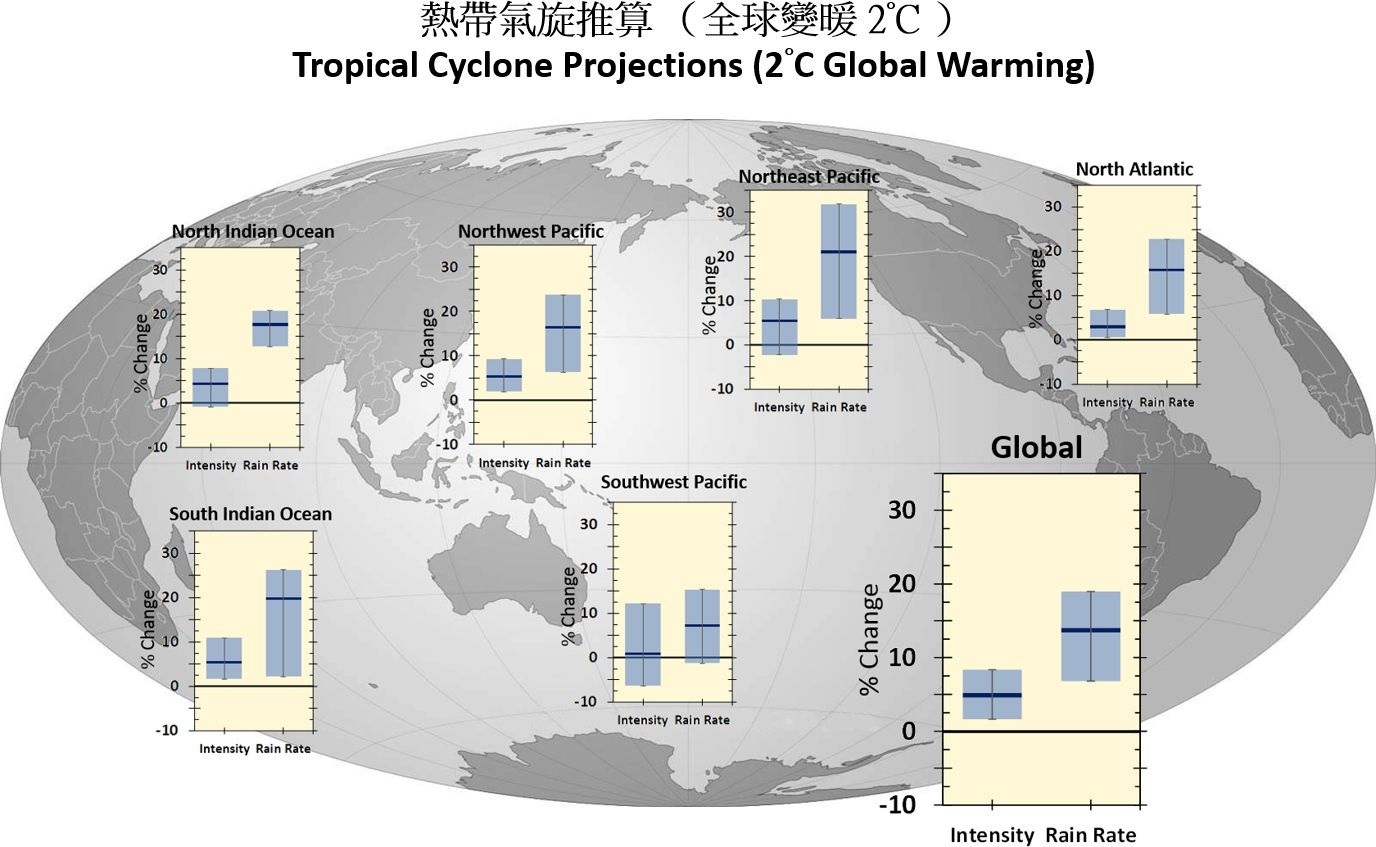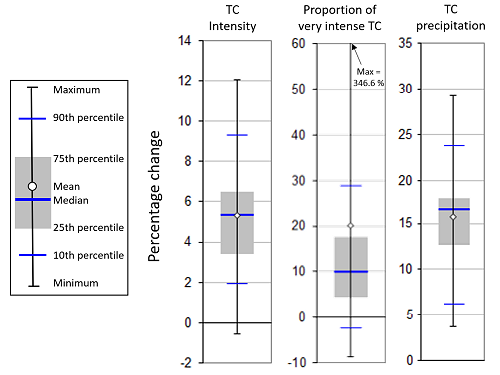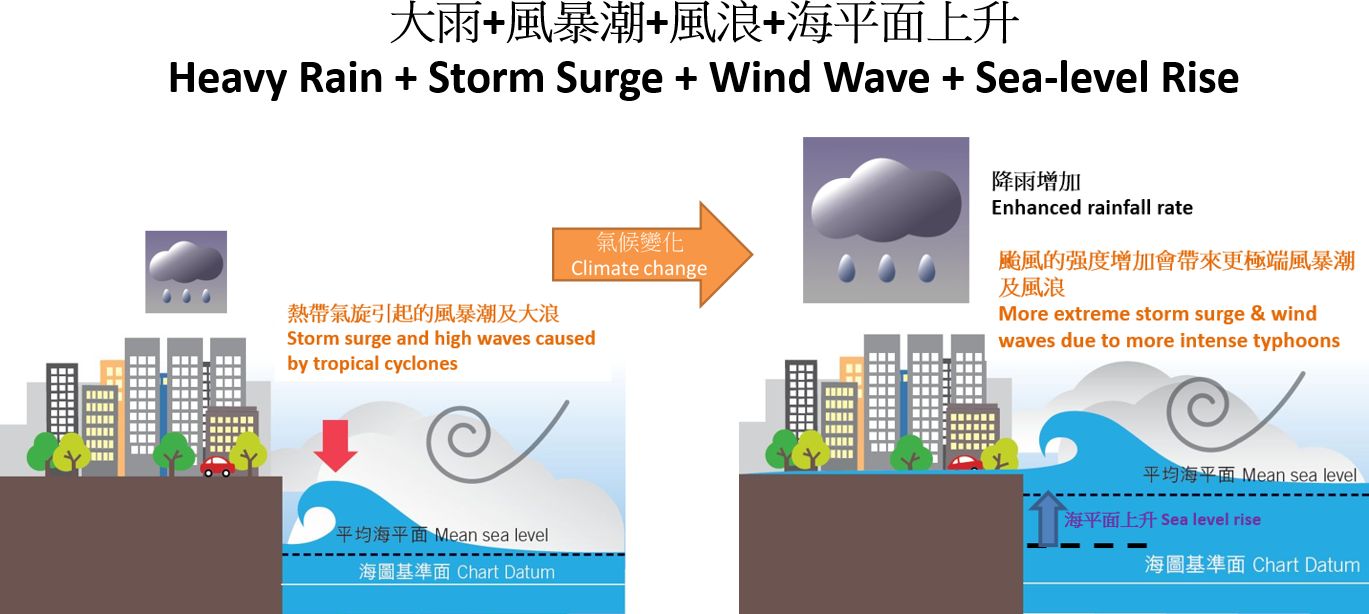Global assessment
According to IPCC AR6, the proportion of intense tropical cyclones and peak wind speeds of the most intense tropical cyclones are projected to increase at the global scale with increasing global warming. The average and maximum rain rates associated with tropical cyclones increase in a warming world.
The projections given by IPCC AR6 are consistent with the assessment published in 2020 by the World Meteorological Organization (WMO) Task Team on Tropical Cyclones and Climate Change, it is likely that the proportion of very intense tropical cyclones[1] will increase in the future. Tropical cyclone intensity (maximum sustained wind speed) and tropical cyclone related rainfall rates will also increase with global warming. Sea level rise due to global warming will lead to higher storm inundation levels, assuming all other factors equal. However, the projected changes for different ocean basins may vary.

Summary of tropical cyclone (TC) projections for a 2℃ global anthropogenic warming scenario[2]. Shown for each basin and the globe are the medians and the 10th-90th-percentile ranges for projected percentage changes in TC intensity and TC near-storm rain rate. (Source: Knutson, T., and Coauthors, 2020: Tropical Cyclones and Climate Change Assessment: Part II: Projected Response to Anthropogenic Warming. Bull. Amer. Meteor. Soc., 101, E303–E322 © American Meteorological Society. Used with permission.)
Western North Pacific
Regarding future changes in tropical cyclones in the western North Pacific, the key findings of the third assessment report of the United Nations ESCAP[3]/WMO Typhoon Committee on impacts of climate change on tropical cyclones in the Typhoon Committee region are summarized as follows:
- Most studies projected an increase in tropical cyclone intensity.
- The proportion of very intense tropical cyclones[1] is expected to increase.
- Tropical cyclone related precipitation rate will increase in a warmer climate.
- Storm surge risk will be exacerbated by future sea level rise and projected increase in tropical cyclone intensity. Plausible increase in tropical cyclone induced wind waves may further aggravate impacts of storm surge and sea level rise on coastal structures and increase coastal inundation risk.

Future projections for tropical cyclone activity in the western North Pacific in a 2℃ warming scenario[2] (Source: Cha et al. (2020))
The impacts of climate change can compound and develop into multi-hazards scenarios.

Note:
- “Very intense tropical cyclone” adopted in the assessment refers to “Hurricane Categories 4 and 5” storms or tropical cyclones with maximum sustained wind speed (10-minute average) of about 105 knots or above which could be roughly considered as super typhoon classification of the Hong Kong Observatory (i.e. 100 knots or above).
- One of the goals of the Paris Agreement is to limit global temperature rise to below 2℃ (relative to pre-industrial levels) by the end of this century in order to avoid the risk of severe climate change impacts on human and ecological systems.
- ESCAP stands for Economic and Social Commission for Asia and the Pacific.


